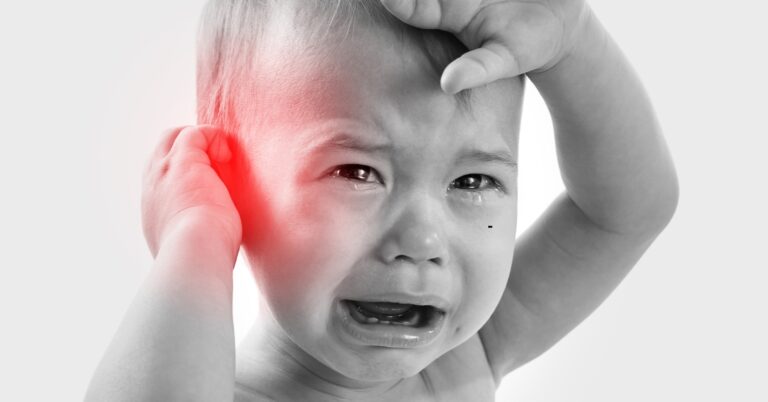We all have children, nephews, nieces, or young ones around us who love to play, run, and explore the world around them.
Sometimes, amidst their boundless energy and excitement, they might stumble or trip causing a foot injury. But when there’s no visible swelling, it can be easy to overlook the incident and assume everything is fine.
How do you know if that seemingly harmless fall has caused an injury that should not be ignored? What might be the consequences of disregarding such an event?
After extensive research and consulting with experienced pediatricians and orthopedic specialists, I’ve compiled a list of 6 hidden risks associated with ignoring a child’s foot injury with no visible swelling. If any of these risks concern you, it might be time to reconsider brushing off these minor accidents.
1. Interference with growth and development
Childhood is a time of rapid growth and development. Every part of a child’s body, including their feet, undergoes significant changes during this period.
Ignoring a foot injury without visible swelling might seem harmless at first. However, even minor injuries can disrupt the normal growth and development process, leading to serious complications.
For instance, a neglected foot injury could affect the alignment of the growing bones in the foot, leading to abnormalities that persist into adulthood. This could result in issues such as flat feet, in-toeing or out-toeing, and even differences in leg length.
2. Psychological implications may arise
When we think of foot injuries, our minds tend to focus on the physical implications. But, surprisingly, there could be psychological implications too.
Overlooking a child’s foot injury might make them feel that their pain or discomfort isn’t significant. This could lead to feelings of being dismissed or neglected.
In some cases, children might even stop reporting their discomfort to avoid being seen as complainers. This unhealthy pattern can extend into their adult lives, causing them to overlook their own health needs.
Therefore, taking their complaints seriously and addressing their injuries promptly, no matter how minor they might appear, is an essential step in teaching children the importance of self-care and health awareness.
3. Functional limitations could set in
We often underestimate just how crucial our feet are in our daily activities until an injury limits their function.
A seemingly minor foot injury, if ignored, can potentially affect a child’s ability to perform basic tasks like walking, running, or even standing. This can have an overwhelming impact on their daily life and activities.
Moreover, this could also reduce their participation in physical activities and sports, leading to decreased fitness levels and potential weight gain.
4. Delayed healing can occur
Our bodies are remarkable machines, capable of healing themselves in most cases. But sometimes, what seems like a minor foot injury in a child can actually be a more serious issue in disguise.
An interesting fact is that our feet are complex structures made up of more than 26 bones, 33 joints, and a network of more than 100 tendons, muscles, and ligaments. This complexity means that even an injury that seems minor can actually involve damage to multiple components, leading to delayed or improper healing if not treated promptly.
5. Exposure to pain becomes normalized
Life is full of discomforts and painful experiences. But in our attempts to teach resilience, we must be cautious not to cross the line into normalizing pain.
When a child’s foot injury is ignored, they may start to believe that living with pain is an unavoidable part of life. This acceptance can lead to a dangerous indifference towards future injuries or health issues, creating a cycle of neglect and suffering.
Every child deserves to grow up knowing that their discomfort matters, their pain is valid, and seeking relief is not just a privilege but a right. Ignoring minor injuries risks physical harm while also threatens to instil a harmful mentality that can endure well into adulthood.
6. Increased risk of future injuries
It’s natural to think that a minor foot injury without visible swelling isn’t a big deal and won’t have any lasting effects. However, this seemingly logical thought process may not always hold true.
Ignoring such an injury can actually increase the risk of future ones. When a child continues to use an injured foot, they may adjust their walking or running pattern to lessen the discomfort, unknowingly putting undue stress on other parts of the foot or even other joints in the body.
This altered movement can lead to overuse or strain injuries elsewhere, resulting in a chain reaction of health issues that could have been prevented by addressing the initial foot injury promptly. Even if an injury seems minor, it’s always wise to take precautions and seek professional advice.
Understanding the importance of foot health in children
When we think about our children’s health, we often focus on areas that seem more immediately important, such as their diet, their sleep habits, or their emotional wellbeing. But it’s crucial to keep in mind that every part of their body plays a significant role in their overall health and development, including their feet.
Children’s feet undergo rapid changes during their early years. These changes can sometimes make them more susceptible to injuries, even when those injuries don’t immediately appear severe or cause visible swelling. And as we’ve explored, even seemingly minor injuries can have significant long-term impacts if left untreated.
But beyond just treating injuries when they occur, there’s a lot that parents can do to help promote good foot health in their children. Ensuring they wear properly fitting shoes, encouraging them to participate in foot-strengthening activities like barefoot play, and routinely checking for any changes or issues can all help maintain their foot health.
Additionally, teaching children to communicate openly about any discomfort they’re feeling can also be beneficial. Encourage them to speak up if they’re experiencing pain or discomfort in their feet or anywhere else. Make sure they know that their health matters, and that they should never have to just ‘push through’ the pain.
Finally, establishing a relationship with a pediatrician or podiatrist who knows your child’s medical history can also be immensely beneficial. They can provide personalized advice and early intervention if any issues do arise.
Taking care of our children’s foot health is not just about addressing injuries as they happen – it’s about prevention, education, and promoting a healthy mindset towards overall wellbeing. So let’s ensure we give this crucial aspect of our child’s health the attention it deserves.








